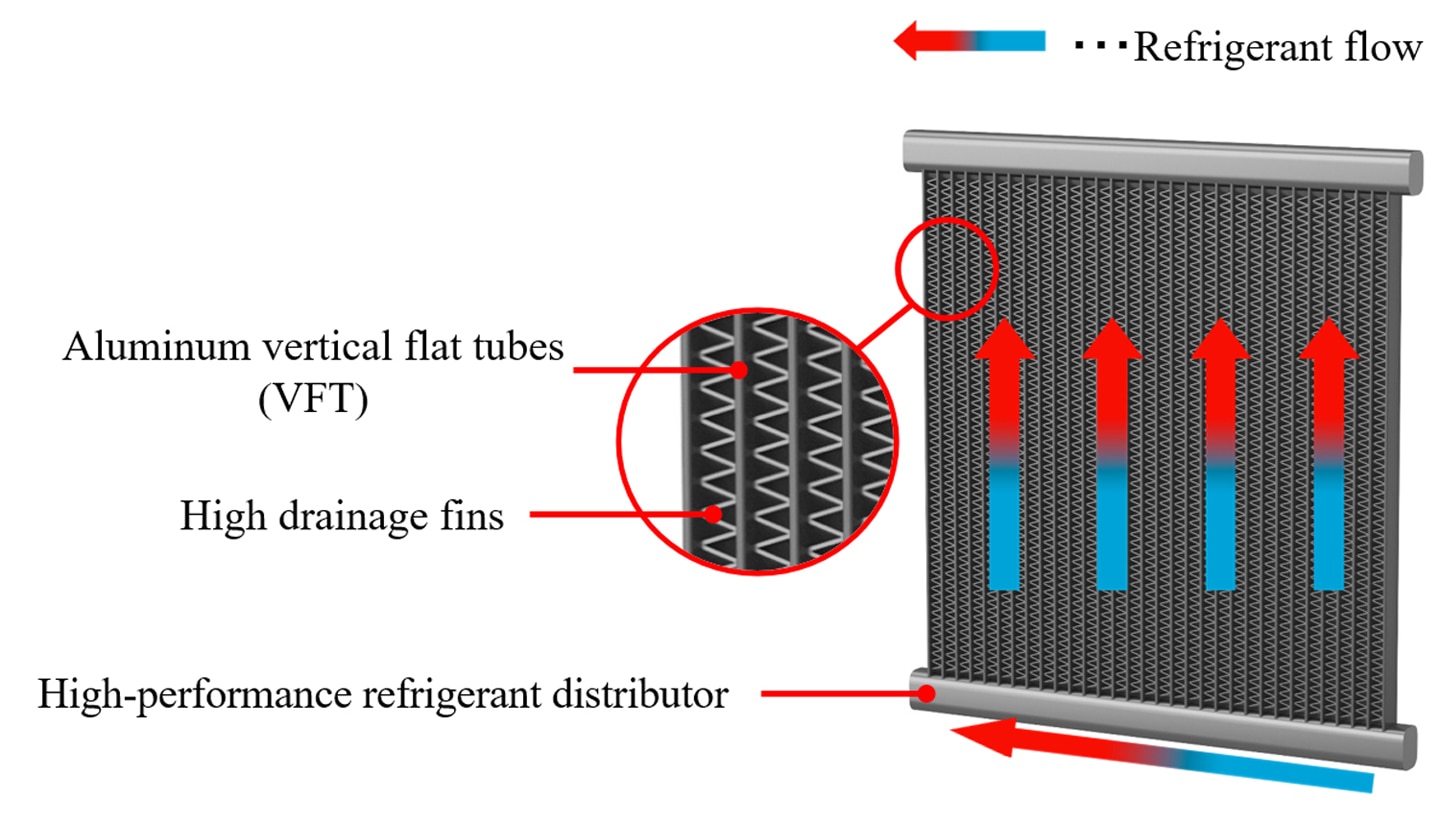- Research & Development
- Air Conditioning Systems
FOR IMMEDIATE RELEASE No. 3641

Fig. 1 Aluminum vertical flat tube heat exchanger
TOKYO, November 1, 2023 - Mitsubishi Electric Corporation (TOKYO: 6503) announced today that it has developed an aluminum vertical flat tube (VFT) design that improves heat exchanger performance by up to an unprecedented* about 40% in heat-pump** air conditioners used for heating and cooling (Fig. 1).
The new VFT heat exchanger combines small-diameter flat tubes, arranged vertically and very compactly, and a high-performance refrigerant distributor with a double-tube structure that evenly distributes refrigerant. Compared to conventional aluminum horizontal flat tube (HFT) heat exchangers, Mitsubishi Electric's new VFT heat exchanger also reduces refrigerant charge thanks to about up to 20% smaller internal volume compared to HFT designs. In addition, Mitsubishi Electric used proprietary analysis technology to develop a new fin design that significantly improves drainage, eliminating the problem of melted frost water freezing on the fins and reducing air contact with the heat exchanger, which reduces performance.
While traditional heat-pump air conditioners use fluorocarbon refrigerants that contribute to global warming, reducing the refrigerant charge tends to lower heat exchanger performance. To reduce refrigerant charge and also improve heat exchanger performance, Mitsubishi Electric focused on reducing the internal volume of the heat exchanger and increasing the surface area of air in contact with the refrigerant, in part by compactly arranging a large number of small-diameter flat tubes. Conventional HFT heat exchangers also use a large number of flat tubes, but the design suffers from low heat exchanger performance because it does not evenly distribute the refrigerant, a mixture of gas and liquid under the influence of gravity.
- *According to Mitsubishi Electric review of stationary air conditioners for cooling and heating, as of November 1, 2023
- **Heats, cools, or warms water with high efficiency by transferring heat between outdoor and indoor air
Inquiry
Media contact
Customer Inquiries
Related articles
- Research & Development
-
Apr 24, 2025
-
Mar 27, 2025
-
Mar 13, 2025
- Air Conditioning Systems
-
Feb 14, 2025
-
Dec 19, 2024
-
Dec 13, 2024
